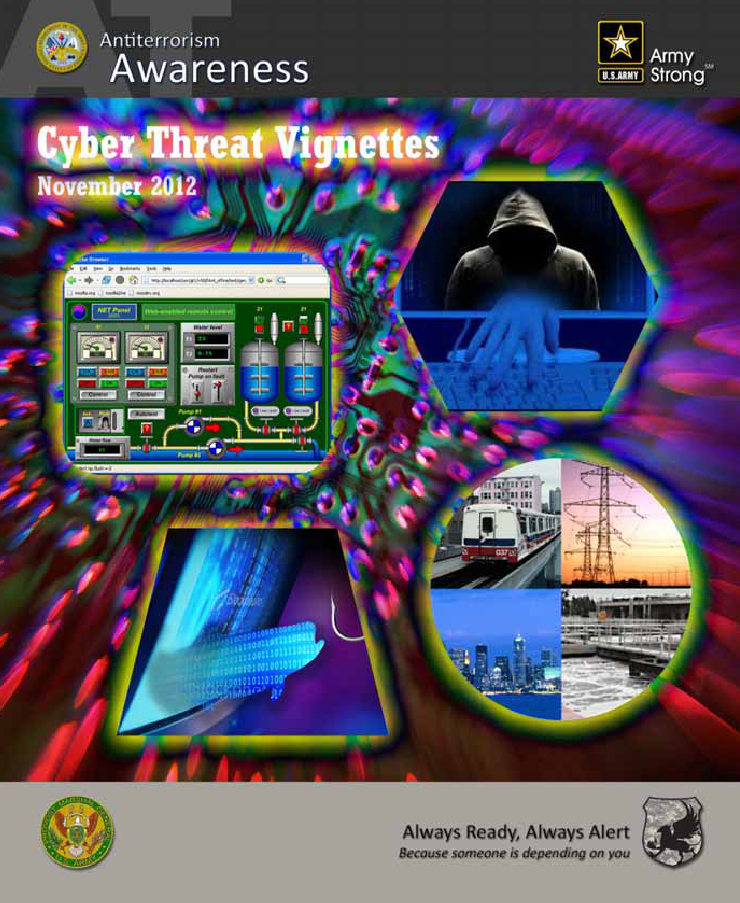The following guides were released in November 2012 by the U.S. Army Office of the Provost Marshal General in collaboration with the Army Cyber Command.
| Cyber Attack Cycle | November 2012 | 20 pages | Download |
| Cyber Threat Vignettes | November 2012 | 12 pages | Download |
…
The Cyber Threat
Ends: Adversaries will use cyberspace to commit espionage, subversion (including insider threat), and sabotage.
Ways: Adversaries gain intelligence and access via cyberspace in order to:
• Recruit insiders (subversion)
• Commit acts of sabotage (stop Army missions; crash networks, electric power, water facilities)
• Harm Army personnel, families, units, and operations
• Commit criminal actions against Army installations, facilities, units, personnel, and/or family members
• Enable conventional threat capabilities
• Identify U.S. vulnerabilities in weapons systems, facilities, and tactics, techniques, and proceduresMeans: To do this, adversaries tactics include:
• Exploiting people’s trust through Phishing attacks
• Infiltrating Malware to perform unauthorized and often surreptitious actions on computers
• Exploiting Social Media through false personas
• Gathering open source information from online postings
• Using infected thumb drives, CDs, DVDs, or other computer memory products to transfer attack mechanisms
• Tampering with cell phones and laptops (both personal and official) especially while personnel are traveling overseas
• Exfiltrating information that enables sabotage and other harmful actions

